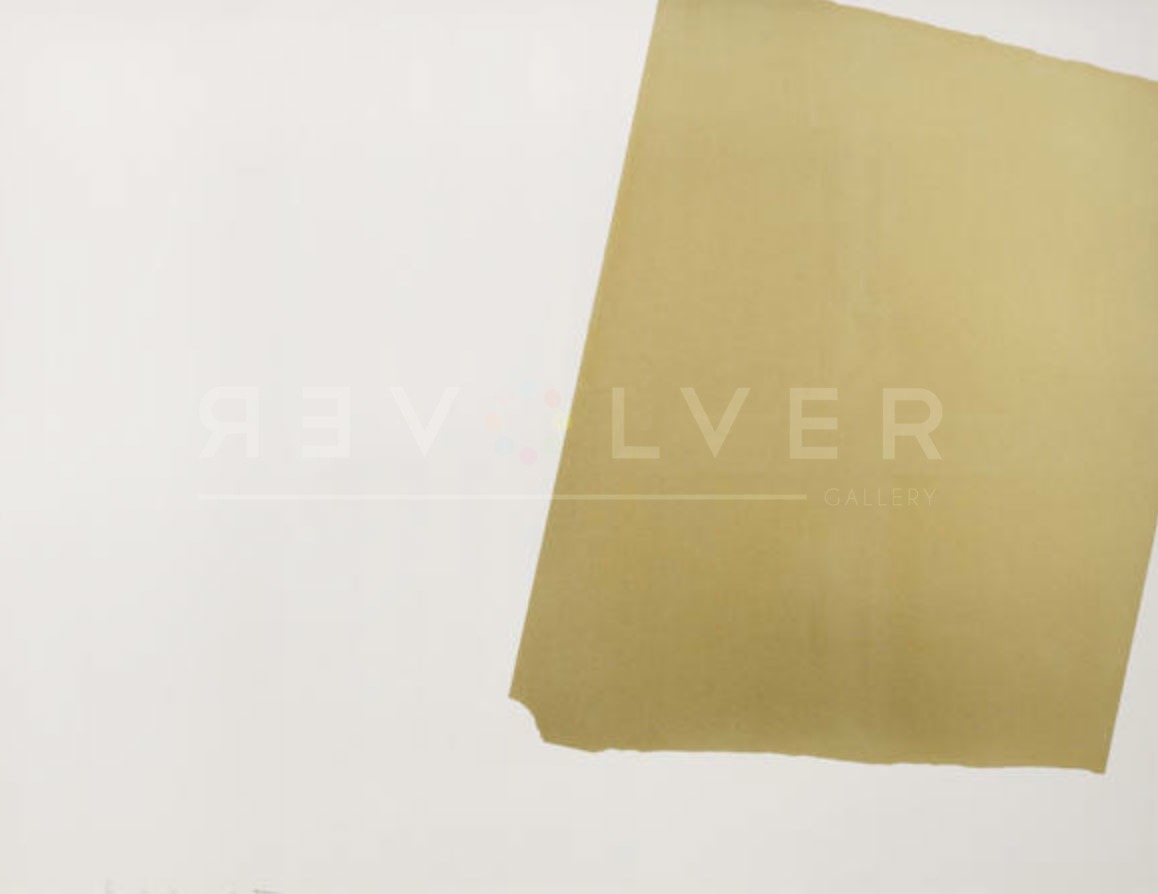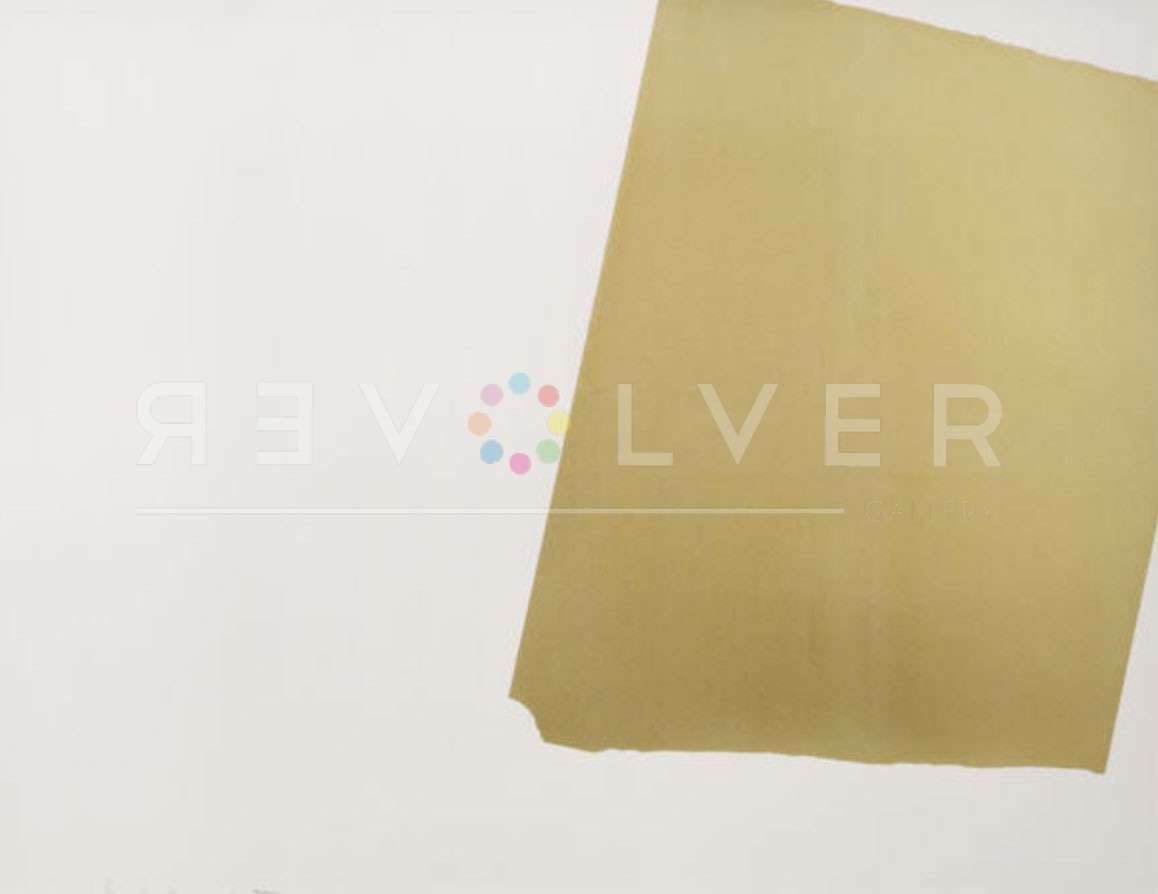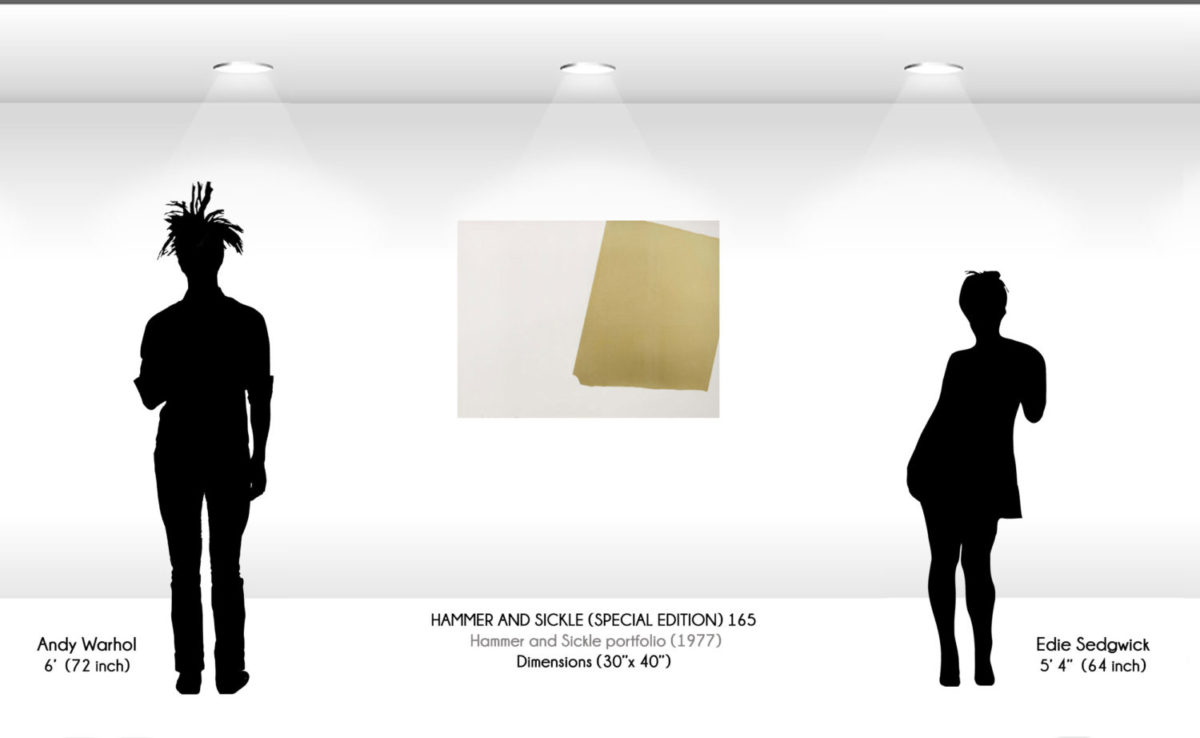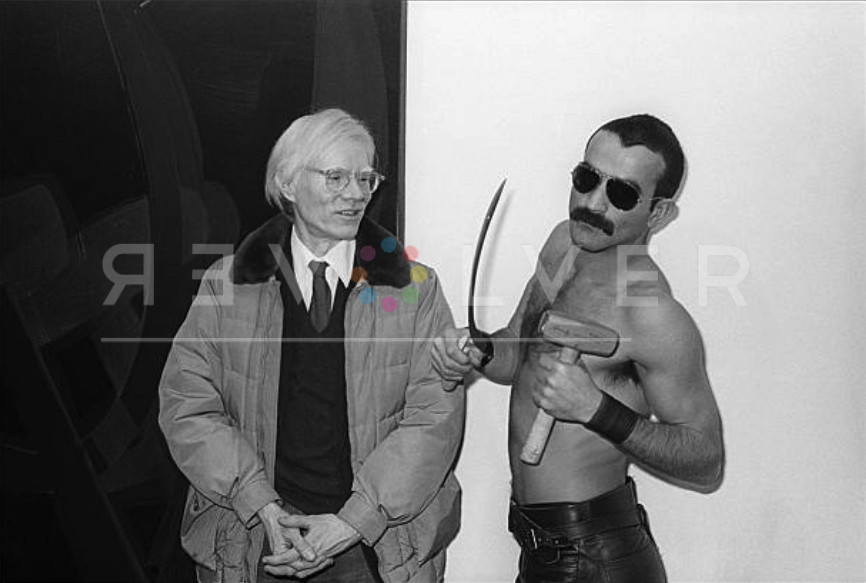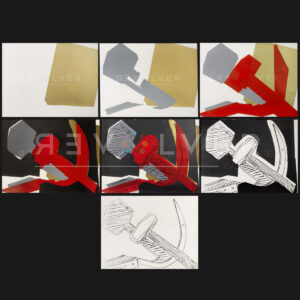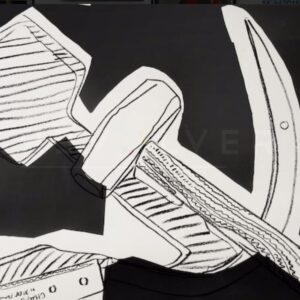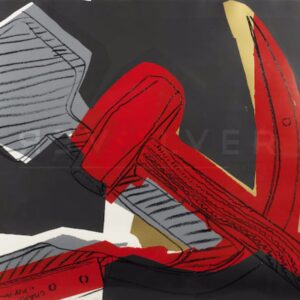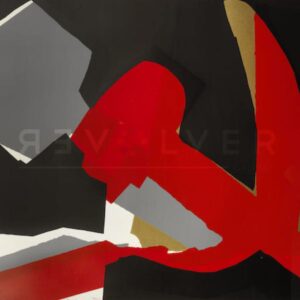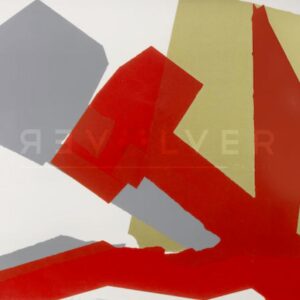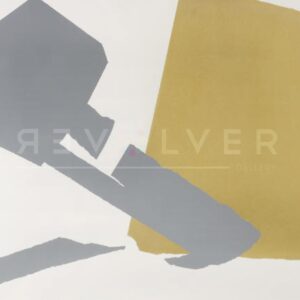Hammer and Sickle (Special Edition) 165 is one of seven screenprints from the special edition of Andy Warhol’s Hammer and Sickle portfolio. The portfolio was created in 1977 and inspired by Warhol’s vacation to Italy in 1976. While visiting Italy, Warhol came across a lot of graffiti art of the communist hammer and sickle, representing the union of farm and industrial workers under communist control. Taken by the imagery found in the communist symbol, Warhol returned to New York and created the portfolio based upon the visual components of the emblem.
Hammer and Sickle (Special Edition) 165 is unique compared to the other six works featured in the special edition portfolio. In this particular screenprint, only the background that is depicted in Hammer and Sickle 166 and 167 is portrayed.
Though Hammer and Sickle 165 is one of the more simplistic screenprints of the series, it’s still controversial in its subject matter. Due to the tensions between the United States and the Soviet Union stemming after WWII and sparking the Cold War, fear of the communist ideology was prevalent in the states. With its attachment to communist imagery, Warhol’s political leanings were questioned. Even though Warhol’s intention with the portfolio was to replicate and reimagine the communist iconography, many viewers saw the screenprints differently. The portfolio came off as a form of political and social commentary, appearing to highlight the communist party and its ideology.
However, Warhol commented on questions regarding the subject matter and implications to communism in the Hammer and Sickle portfolio by simply saying, “we went off to the store and bought a hammer and sickle. Bob [editor of Warhol’s Interview Magazine] has a lawn to cut.” Warhol, known for his commercial replications, rarely states that his work’s intention is to address political and social concerns. In the Hammer and Sickle portfolio, Warhol uses Pop Art to decontexctualize the symbol, eradicating its meaning and presenting the ubiquitous icon in a context that merely affirms its power and relevance. The subtle implications found within the portfolio wouldn’t be uncommon of Warhol, subtly implying a satirical presentation regarding the Cold War.
Photo credit: Andy Warhol poses with Victor Hugo, who holds the original hammer and sickle artist used in the works, at the opening of his “Hammer & Sickle” show at the Castelli Gallery, New York, New York, January 11, 1977. Photo by Allan Tannenbaum/Getty Images.

